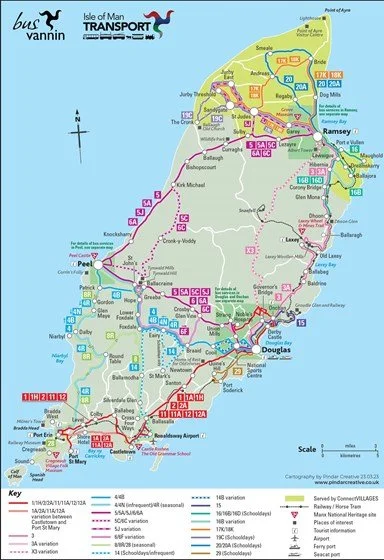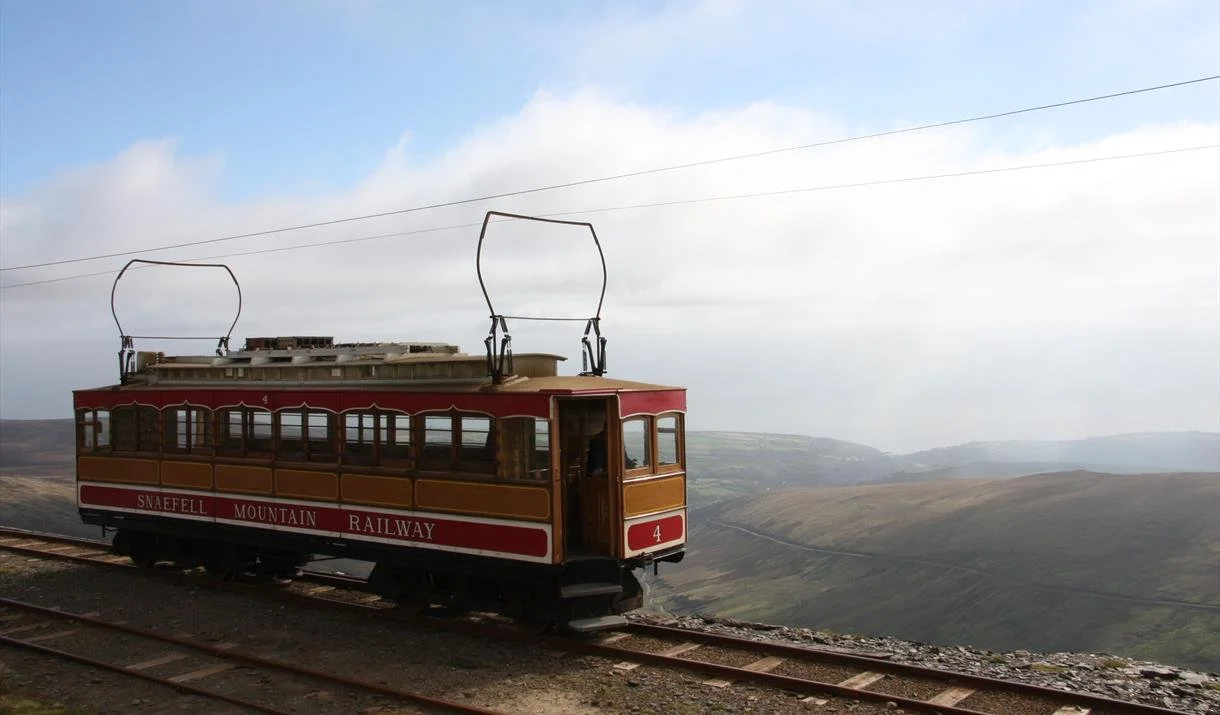A perfect car-free holiday in the home of motorsports
One of the funny things about the Isle of Man is that it’s the ideal car-free holiday destination, and yet its main association in most peoples’ minds is motorsport.
For two weeks each year, it hosts the TT. I don’t know much about motorcycle racing, but I know the TT is big, fast, furious (and pretty dangerous - at least one person is killed most years). The Isle of Man is also high on petrolheads’ radar because, unlike in the UK, there is no national speed limit. This may be why Jeremy Clarkson moved there - and stayed until he alienated the locals by attempting to divert a public footpath that ran past his front door.
So, we’re talking about an island famous for motorsports, beloved by boy racers and once home to the then presenter of Top Gear… and we’re saying it’s the ideal car-free holiday destination?
Yup, that’s right!
Beautiful
Before we get onto why it’s the ideal car-free destination, let’s just sort out why it’s an ideal holiday destination at all.
Bay ny Carrickey
When we told people we were going on holiday to the Isle of Man, they looked at us with a mixture of puzzlement and pity.
“Someone has to”, one colleague of mine remarked. Indeed, by the time we set off, we’d had the confidence in our decision to go knocked somewhat. Were we making a terrible mistake?
NO!
It is absolutely gorgeous!
The south of the island is all heather-strewn cliffs, craggy granite, cosy villages and cheery beaches. Think Cornwall or Pembrokeshire.
Heather-strewn cliffs between Port Erin and Port St Mary
The middle of the island is moors and mountains: Yorkshire or Snowdonia vibes.
The north is wild, flat fenland with a strong Norfolk tinge.
The edges are crinkled with the unique “Manx glens”: stunningly beautiful wooded valleys, dappled with waterfalls.
The girls swim in one of the rivers. It’s freezing! We don’t.
It’s like the whole of Britain in miniature - but with the added bonus of the glens.
Ballaglass Glen: one of the unique, and beautiful, Manx Glens. Photo by Damien Shaw
As a place to visit, it is highly recommended.
Dense transport
But why is the Isle of Man such a great car-free holiday destination? Well, mainly because it has such an incredible public transport network.
One of the challenges of car-free holidaying is that rural areas aren’t always the best connected.
Ballaglass Glen tram stop. The footpath into the glen is the dark patch in the centre of this picture. The public transport network provides extraordinary access to rural areas.
The Isle of Man is about the same size as Anglesey, and has roughly the same population. Anglesey has a single railway line with six stations. It has three bus routes, each of which run hourly (none on Sundays) and which serve a total of around 15 stops.
By contrast, the Isle of Man has one railway and two rural tram lines which, between them serve 20 stations. It has endless bus routes (see the map below) which, together, result in all the main towns and villages being connected every twenty minutes. In short, you can easily get anywhere.
The Isle of Man bus network
Value transport
Unlike in the UK, where train and bus services are run by totally separate companies, the rail and bus services in the Isle of Man are all nationalised and all run by Isle of Man Transport. The upshot of this is that a Go Explore smart card is extraordinary value. A Family Go Explore card costs £122 for seven days, and covers two adults and up to three children. That works out at £3.40 per person per day for unlimited travel throughout the whole island.
One of the downsides of carfree living is that you don’t get the illusion of freedom that drivers feel. Because you have to work around timetables and pay separate fares, it’s hard to be freeflowing. The combination of a dense transport network and a pass that covers everything means that the Isle of Man is a great place for feeling that freedom.
Fun transport
But that’s not all.
The Isle of Man is virtually unique globally in that the rail services that run today are the same as were opened by the Victorians. I don’t mean the same type of services, or that they go to similar places. They are the same actual trains and trams. Indeed, tram 1 on the Manx Electric Railway holds the global record for the oldest tram to still be running the route for which it was built… 130 years ago. The carriages on the steam railway are even older: this line opened 150 years ago, and the same Victorian locomotives and carriages still chug their way round the south of the island.
Our local station was Santon. Photo by Michael Atkinson
I’ve never heard of anywhere else like it.
The steam railway carriages are just adorable. They are, of course, all compartment coaches, so travelling in them feels like something straight out of Agatha Christie. (Indeed, the murder scene on the 4:50 from Paddington depends on individual compartments). Because they’re individual, one of two things happens. Either you get them to yourselves, which feels wonderfully coccoonish and cosy. Or you share with fellow travellers, in which case you inevitably fall into fascinating conversation (we learned a lot about life on the island from other rail riders).
Tip: try to nab a first class compartment. The trains still have first class, but they’re now for everyone
The steam railway is the line that covers the more bucolic south. The north of the island is more rugged and mountainous, which is why the Victorian engineers opted for the new electric tram technology as a way of dealing with the hills.
These tram lines are some of the most spectacular rail lines in the country. North of Laxey, they hug precipitous cliffs, with the sea churning far below. Each service contains an open tram car and a closed one. Travelling in an open tram car on the edge of a cliff is a truly exhilarating experience! The tram also runs to the top of Snaefell (literally snow mountain; though fog is much more ocmmon), the tallest peak on the island (and the only mountain), where there is a very pleasant cafe.
Take a tram to the summit of Snaefell
Getting to the island is also fun. If you’re carefree carfree, you may also want to minimise flying. Luckily, there’s a fast ferry from Liverpool. As a scouser, it was a particular joy for me to be able to leave from the centre of my home city. But I defy anyone not to be impressed by the experience of sailing out of the Mersey and into the Irish Sea.
In summary, beautiful landscapes, gorgeous trains, great value… the perfect carfree holiday destination.
We loved it and, if you can cope with your friends sounding a bit baffled, I’m absolutely sure you will too.









